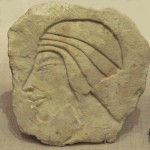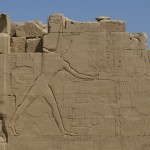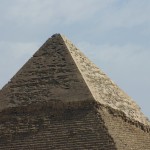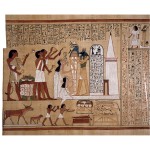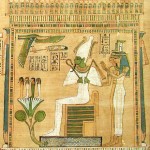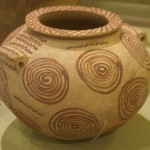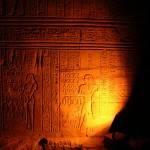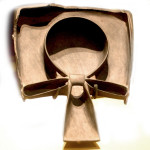
Read Like an Egyptian — Art in Ancient Egypt, Part 1
Probably only one percent of the ancient Egyptians were literate, and those literate few were royalty, nobility, upper-crust managers and administrators, at least some of the top military people, full-time priests and scribes. But many people could “read” what they were seeing, and understand it without knowing how to read hieroglyphs. The ideas and symbolic iconography were grounded in their culture; the art spoke to them even if their knowledge of the written text was, for the vast majority of the public, rudimentary at best — no doubt limited to a few basic glyphs. [more…]

Brian Alm’s decoder for Greek terms
Further to his previous article, Brian Alm has very kindly responded to a number of requests for a decoder for Greek terms by sending the following tables for readers. [more…]
Edition - April, 2014

Confessions of a Part-time Lecturer to Newcomers in Egyptology: Cheops or Khufu?
Call me a curmudgeon if you will, but I prefer “purist.” Purists are expected to rant occasionally, but often there is vindication for that, grounded in practicality. I am speaking of the mess the Greeks made of Egyptian words — names, especially — that has carried on down to the present day, perpetuated (unfortunately) by some of the best Egyptologists in the business, and by now no doubt irreversible. Purists can be frustrated — short of madness, although perhaps not by a wide margin — by such irritations and the futility of their remedial efforts, and I suppose others may as well just let those of us so inclined simply grimace and grind our teeth. [more…]
 By
By 